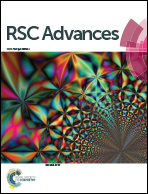A greener approach toward gadolinium-based contrast agents†
Abstract
Gadolinium-based contrast agents are widely used to enhance the contrast of images in magnetic resonance imaging procedures. In particular, Gd-DTPA (Magnevist™) and Gd-DOTA (Dotarem™) were the first contrast agents used in clinical practice. Herein, a new environmentally friendly synthetic approach for Gd-DTPA, Gd-DOTA and their derivatives has been described using ultrasound energy. Our protocol provides a simple procedure and short reaction times as well as elevated yields and purities. Additionally, in this novel method, no organic solvent is involved at any stage of the reaction, isolation or purification of products.


 Please wait while we load your content...
Please wait while we load your content...